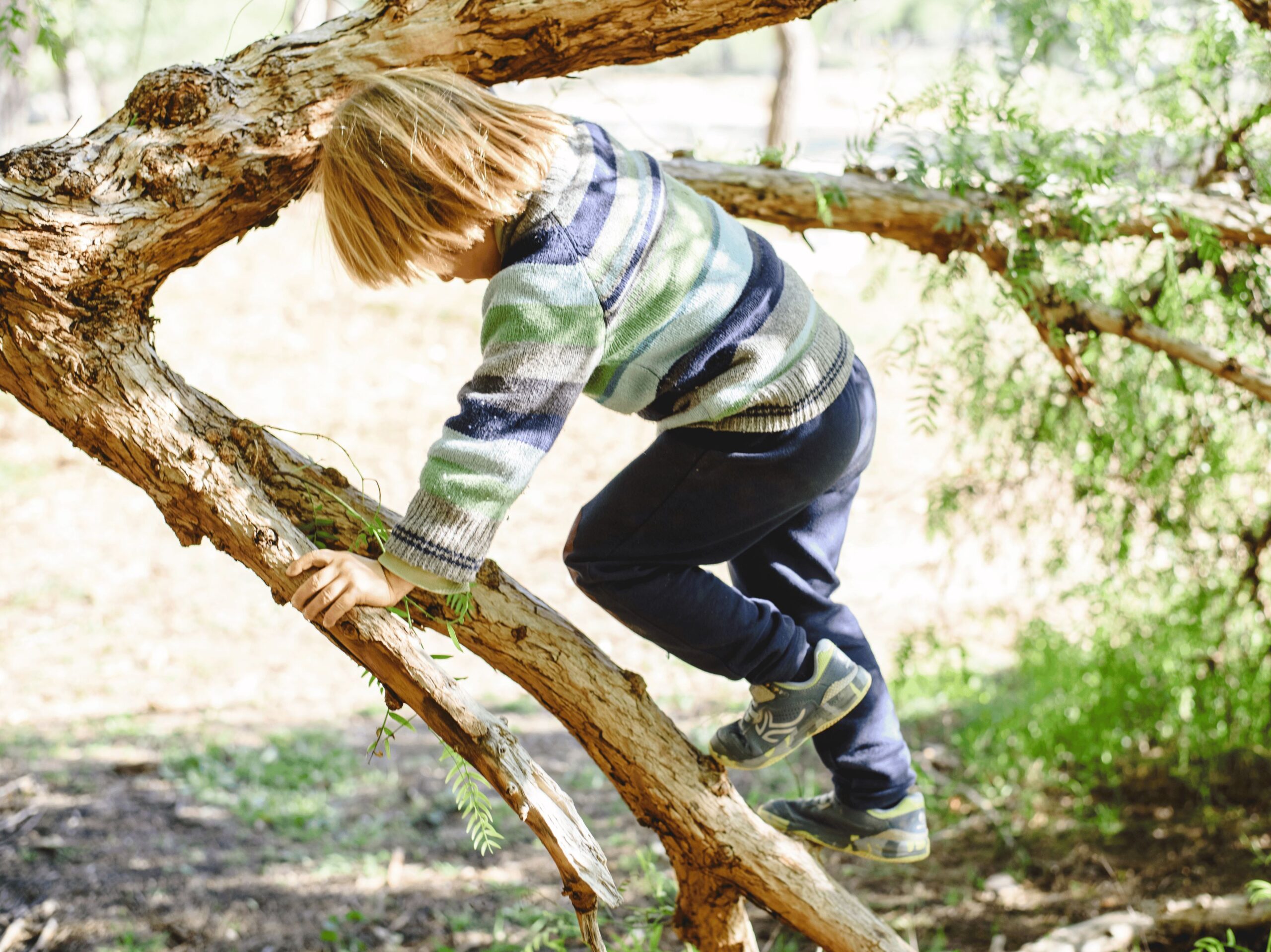
There is a lot of talk about the benefits of outdoor and risky play in education these days, however in reality we, as Canadians, live in a relatively risk-averse society. What does risky play even mean? Are we offering enough active and outdoor play for healthy development in our children?
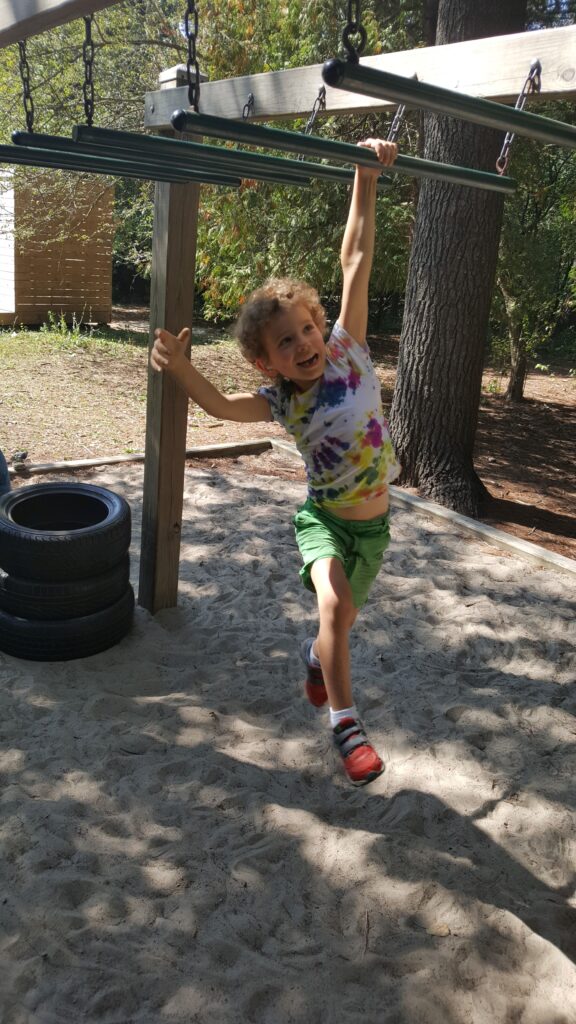
Looking back, I have fond memories of my carefree childhood days! I can still vividly remember the endless hours spent outdoors with my siblings and neighbourhood friends. From imaginative games of tag to daring bike races, from playing cops and robbers to selling lemonade on the street.
In the summer months, I can still hear my mother shooing us off the ‘toob’ (television) insisting we get some fresh air, but what really stands out are our family camping trips. Climbing trees, racing down sand hills, scaling fallen logs and poking around abandoned places—maybe not the safest, but it gave us the chance to play freely, something kids today seem to miss out on and now I see more than ever the benefit of these carefree joys of my childhood.
With the rise of screen time and structured after school activities, such unstructured playtime feels like it is something of the past.
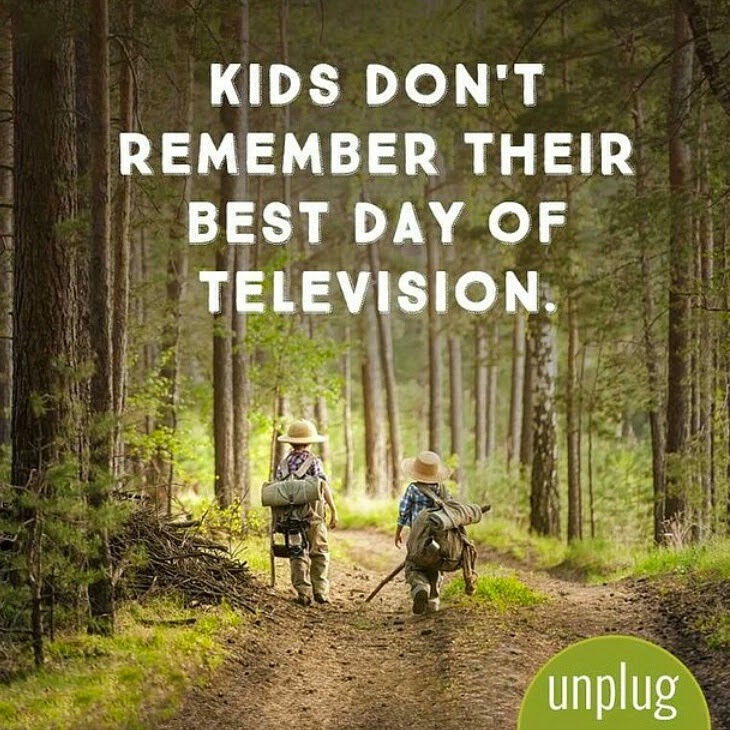
I can’t help but notice a significant difference in the way children experience childhood today. The freedom to explore, create, and imagine seems to be giving way to structured schedules and digital distractions, leaving little room for the kind of spontaneous adventures that defined my own childhood. I cannot tell you the joy I feel when I see children outside playing. It is music to my ears and makes my heart smile.
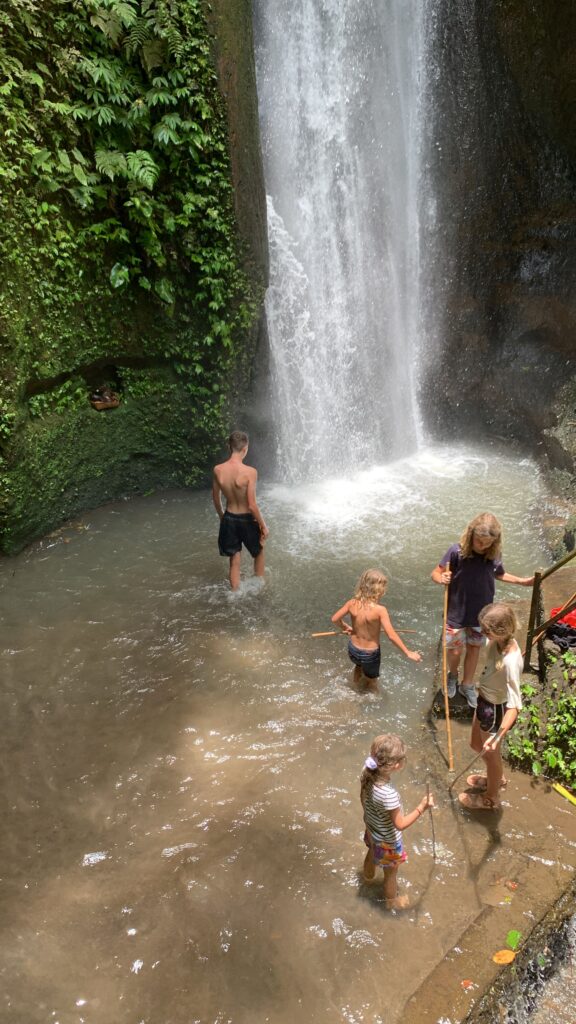
During my studies with CNAC (Child and Nature Alliance of Canada) focussing on Forest and Nature School (FNS), we delved deeply into this issue. We pondered the idea of whether or not we are “bubble wrapping” our children and questioned the over emphasis on making learning situations as safe as possible rather than as safe as needed (this distinction was proposed by Ellen Sandseter). As FNS educators, we all agreed that time and space for unstructured play, active outdoor experiences and risk- taking activities are so valuable and necessary for healthy development. Research supports the significant role these elements play in fostering healthy development in children. We’ve adopted a robust risk/benefit assessment framework to support this kind of play, backed by research. As outdoor educators, we’re sensitive to varying comfort levels with risk. While “risk” might sound alarming to some, including parents, insurance providers, caregivers and teachers, in Forest and Nature School (FNS), it’s about empowering children through thrilling, yet safe, unstructured play. It’s not about recklessness or endangerment, but about allowing children to assess their skills and confidence in challenging situations.https://dera.ioe.ac.uk/id/eprint/8625/1/00942-2008DOM-EN.pdf
It’s about giving children the freedom to explore the forests and ponds, deciding how high to climb, get dirty, build forts and play hide n’ seek, rough-house and wander to learn their own limits and build a strong sense of self. It allows them to build resiliency, develop skills, problem solve and gain confidence.
According to the best available evidence, interpreted by a group of Canadian experts representing 14 organizations, and reviewed and edited by more than 1600 stakeholders the Position Statement on Active Play is:
- Access to active play in nature and outdoors including its risks is essential for healthy child development.
- It is recommended to increase children’s opportunities for self-directed play outdoors in all settings.
- When children are outside they move more, sit less and play longer which are behaviours associated with improved cholesterol levels, blood pressure, body composition, cardiorespiratory and musculoskeletal fitness, and aspects of mental and social health. https://pubmed.ncbi.nlm.nih.gov/26062039/
- Hyper-parenting limits physical activity and can harm mental health. https://pubmed.ncbi.nlm.nih.gov/25634332/
- Children are more curious about, and interested in, natural spaces than pre-fabricated play structures. https://www.researchgate.net/publication/262967073_The_impact_of_playground_design_on_play_choices_and_behaviors_of_pre-school_children
Outdoor play is safer than you might think!
- Broken bones and head injuries unfortunately do happen, but major tauma is uncommon. Most injuries associated with outdoor play is minor. https://pubmed.ncbi.nlm.nih.gov/23730171/
- The odds of a total stranger abduction are about 1 in 14 million based on RCMP reports. https://publications.gc.ca/site/eng/431910/publication.html Being with friends may further reduce this number.
Keeping children inside- Is it really safer?
- When children spend more time indoors, they are more likely to be on screens and exposed to cyber-predators and violence and eat unhealthy snacks. https://www.researchgate.net/publication/228811556_Protecting_Children_From_Online_Sexual_Predators_Technological_Psychoeducational_and_Legal_Considerations
- In the long-term, sedentary behaviour and inactivity elevate odds of developing chronic diseases, including heart disease, type -2 diabetes, some forms of cancer and mental health problems. https://pubmed.ncbi.nlm.nih.gov/22818936/
As I reflect on the joys of my own childhood, it’s clear that unstructured play, outdoor adventures, and risky play were pivotal in shaping who I am today. However, I am raising three boys in a world increasingly dominated by screens and structured activity. When I think back to when they were younger, I remember feeling the external pressure to introduce them to organized sports at a very young age. However, I came to realize the importance of unstructured time and play. Instead of rushing into organized sports or video gaming, my husband and I decided to hold off. They boys loved having ‘low key days’ (they coined the phrase :)) where they could choose their own kind of play. They are now 11, 12 and 15 and are excelling at sport despite starting much later than all their peers. If anything, they are more enthusiastic and want to practise all the time!
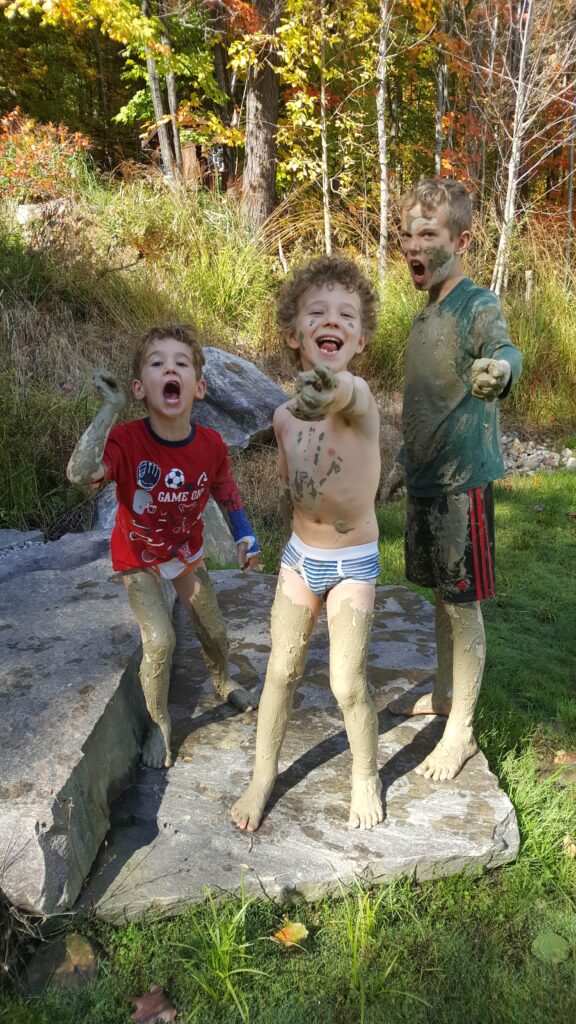
Outdoor and unstructured risky play is about allowing kids to be kids- living healthier and more active childhoods. So, the next time you’re tempted to caution against climbing trees or getting a little dirty, remember the countless benefits these experiences offer. Let’s support one another and encourage our children to embrace the wild, to learn through adventure, and to revel in the simple joys of being kids.
Alynn xxo